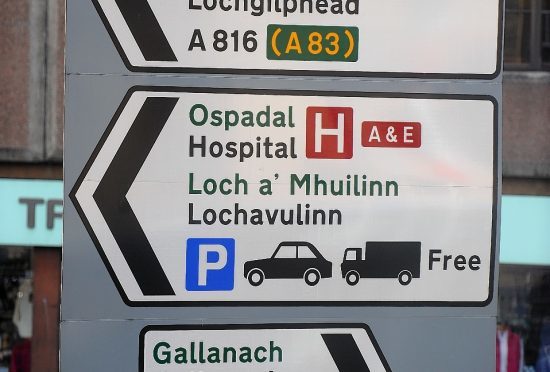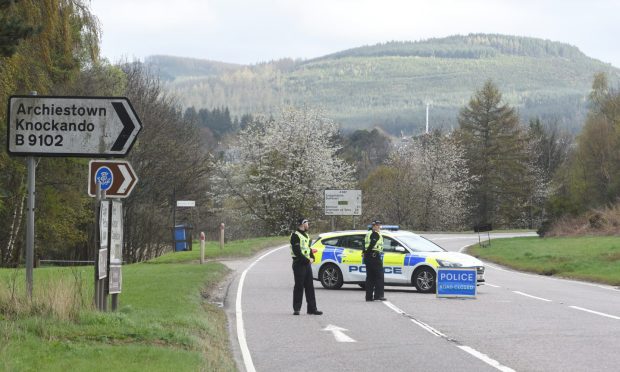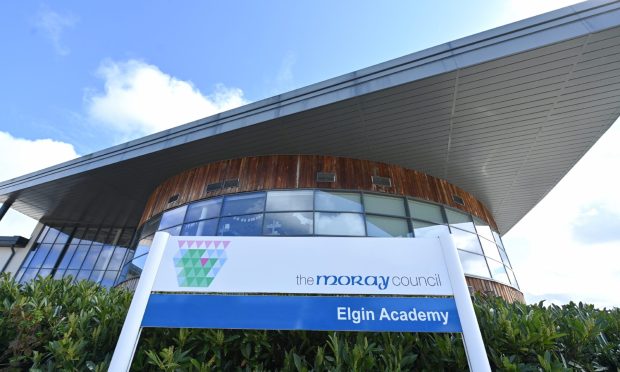A Scottish Government body has been branded the “Gaelic Gestapo” after Moray councillors were forced into backing plans to spend thousands of pounds promoting the language.
Cash-strapped Moray Council yesterday decided to set aside at least £40,000 for the project – despite only 1% of the population speaking the former national tongue.
Road signs will now be written in Gaelic and English and the language will be taught in schools, with the local authority having to train staff to speak it.
Councillors said their “hands were tied” because of a national edict that says all authorities must encourage people to learn it.
A 2005 law passed by the Scottish Government requires public organisations to draw up a Gaelic language plan when requested to do so by Bòrd na Gàidhlig – the board which polices the policy.
Community planning and development manager John Ferguson said the council would now have to “show equal respect for Gaelic and English”.
But independent councillor George Alexander fought the proposals and urged his fellow members to vote against progressing the scheme – despite being warned that would bring the authority into “direct conflict” with SNP ministers.
The Forres representative said that the council could not afford to spend the estimated £40,000 required.
And Mr Alexander remained defiant even after the council’s legal advisor told him it would be “against the law” to defy an act of parliament.
He said: “Who will go to jail if we don’t follow what we are told to do?”
Mr Alexander led protests against the move, labelling the projected price tag “ridiculous”.
He said: “I dread the idea of spending money because Bord Na Gaidhlig says we have to.
“They are behaving like a Gaelic Gestapo.
“The thought of road signs with Gaelic first and English second sends a shiver down my spine, people can find that confusing.
“I think spending £40,000 getting Gaelic into Moray is throwing money down a black hole.
“What happened to the Gaelic language is a tragedy, but you can’t reverse history.”
He added: “I move we put it on the back burner, until the sheriff or the bailiff, or whoever they send for me, comes chapping on my door.”
But Mr Alexander’s pleas fell on deaf ears when he was advised his motion to reject the scheme was “not competent” and it was voted through.
Most SNP representatives argued in favour of the scheme and Elgin City South member Graham Leadbitter moved it be progressed.
But nationalist colleagues Mike Shand, broke ranks with the group to complain about the costly initiative.
The Elgin City North councillor said: “On a personal basis, I wish it was booted into the long grass.”
However, he said that formally protesting the plan was “a futile gesture” akin to “stamping our feet in absolute frustration”.
Mr Shand later “reluctantly” backed Mr Leadbitter’s motion to approve the scheme.
Council leader Stewart Cree said he felt like his “hands were tied” when deciding how to vote on the matter.
He said Doric was also a cherished traditional dialect in many parts of Moray but did not receive the same promotion.
He added: “Our hands are tied, we have been given a directive to ‘do what we are told’.”
Forres councillor Anne Skene also sided against the scheme despite herself having Gaelic roots.
Last night Bord Na Gaidhlig’s chief executive Shone MacLennan welcomed the council’s eventual decision to approve the plan.
She said Moray residents had “an important part to play” in keeping the language alive.
She added: “We look forward to working constructively with Moray Council in delivering the aims of its Gaelic Language Plan.
“Gaelic plays an important part in economic, social and cultural life across Scotland.
“The overall ambition is to secure a sustainable future for the language for everyone in Scotland, and the residents of Moray have an important part to play in this.”










